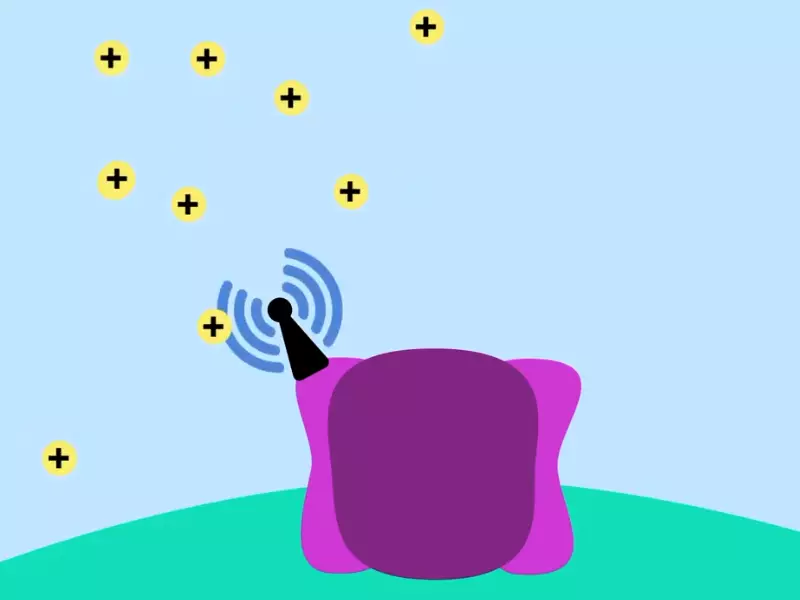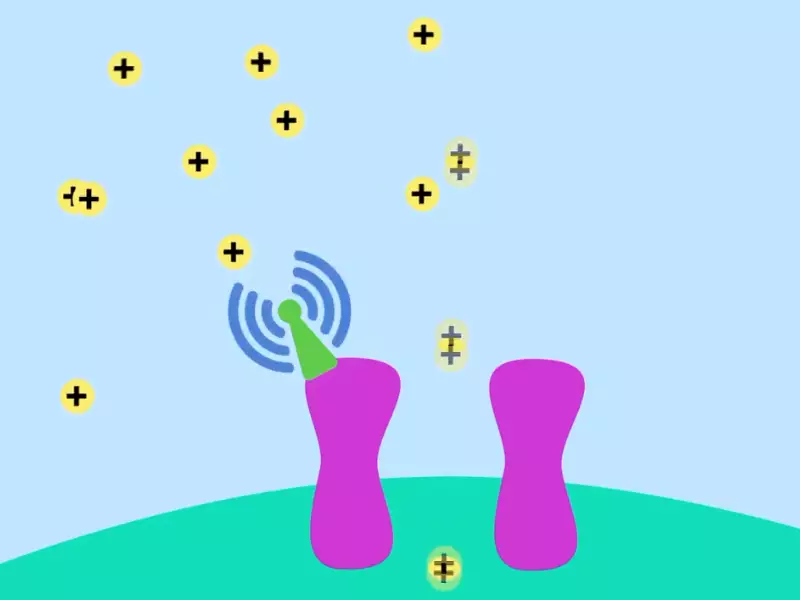Ion channels are integral proteins found in the cell membranes of virtually all living cells, playing a pivotal role in a myriad of physiological processes. These channels are pathways that allow ions to travel in and out of cells, critical for maintaining the cell’s electrical balance, signaling, and homeostasis. Among the diverse types of ion channels, voltage-gated and ligand-gated ion channels stand out for their unique activation mechanisms and functions.
Voltage-gated ion channels open or close in response to changes in the cell membrane’s electrical potential, while ligand-gated ion channels respond to specific chemical signals, such as neurotransmitters binding to the channel. These channels are fundamental in transmitting signals across neurons and muscle cells, contributing to the complex processes of muscle contraction, hormone secretion, and neural communication.
The distinction between voltage-gated and ligand-gated ion channels lies in their activation triggers and structural features, each serving specific roles in cellular physiology. Voltage-gated channels are primarily involved in the generation and propagation of electrical signals in neurons and muscle cells. In contrast, ligand-gated channels mediate most of the synaptic transmission, allowing for the rapid response to chemical signals. This differentiation is crucial for understanding how cells communicate and respond to their environment, influencing everything from muscle movement to the sensations of pain and pleasure.

Ion Channels Explained
What Are Ion Channels
Definition and Role in Cells
Ion channels are proteins that form pores in the membranes of cells. These pores allow ions, which are charged particles, to move in and out of the cell. This movement is essential for a variety of cellular functions, including electrical signaling, nutrient transport, and osmoregulation. Essentially, ion channels are the gatekeepers of the cell, controlling the flow of information and resources.
Types of Ion Channels
Ion channels can be classified based on their activation mechanisms or the types of ions they transport. The main categories include:
- Voltage-gated ion channels: Activated by changes in electrical potential across the cell membrane.
- Ligand-gated ion channels: Open in response to the binding of a specific molecule or ligand.
- Mechanosensitive ion channels: Respond to mechanical forces or distortions of the cell membrane.
Each type plays a unique role in cell physiology, enabling cells to respond to a wide range of internal and external stimuli.
Voltage-Gated Ion Channels
Voltage Gated Basics
Definition and How They Work
Voltage-gated ion channels are molecular gates that open or close in response to changes in the voltage across the cell membrane. These changes are often the result of cellular activity, such as the firing of neurons or muscle contraction. When the electrical charge inside the cell becomes more positive or negative, these channels change their shape, allowing ions to pass through.
Function and Importance
Role in Action Potentials and Neurotransmission
Voltage-gated ion channels are crucial for the generation of action potentials, the electrical signals that neurons use to communicate. They enable the rapid influx and efflux of ions, creating a wave of electrical activity that propagates along the neuron. This process is fundamental to neurotransmission, allowing the brain to send signals across vast networks of neurons.
Key Characteristics
Structural Features and Ion Selectivity
These channels are known for their specificity; each channel typically allows only one type of ion to pass through, such as sodium (Na+), potassium (K+), calcium (Ca2+), or chloride (Cl-). This selectivity is vital for the cell’s ability to carry out precise electrical signaling.
Ligand-Gated Ion Channels
Ligand Gated Basics
Definition and Mechanism of Action
Ligand-gated ion channels, also known as receptor-operated channels, open in response to the binding of a chemical messenger, or ligand, such as a neurotransmitter. This binding causes the channel to change its conformation and create an open pore through which ions can pass.
Function and Importance
Role in Synaptic Transmission and Cell Signaling
These channels play a key role in synaptic transmission, the process by which neurons communicate with each other at synapses. When a neurotransmitter is released from a neuron, it binds to ligand-gated ion channels on the receiving neuron, causing ions to flow into or out of the cell. This ion movement generates a post-synaptic potential that can initiate a new action potential, continuing the chain of communication.
Key Characteristics
Structural Features and Activation by Ligands
Ligand-gated ion channels are characterized by their binding sites for specific ligands. The interaction between the ligand and the channel is highly specific, allowing for precise control over the opening and closing of the channel. This specificity is crucial for the accurate transmission of signals across synapses.

Comparing Voltage and Ligand Gated Channels
Ion channels are crucial for various physiological processes, and among them, voltage-gated and ligand-gated ion channels stand out due to their fundamental roles in cell signaling and homeostasis. Understanding these channels’ mechanisms, structures, and functions not only provides insights into basic biology but also opens up avenues for medical and research applications.
Activation Mechanisms
Differences in How Channels Open
Voltage-gated ion channels are activated by changes in membrane potential. When the electrical charge across a cell’s membrane changes significantly, these channels open or close, allowing ions to flow in or out of the cell. This process is critical for the propagation of electrical signals in neurons and muscle cells.
On the other hand, ligand-gated ion channels open in response to the binding of specific molecules, such as neurotransmitters or hormones. This binding triggers a conformational change in the channel, creating a pathway for ions to pass through the membrane. This mechanism is essential for synaptic communication between neurons and for various signaling pathways within cells.
Structural Differences
Comparison of Structural Features
The structural differences between voltage-gated and ligand-gated ion channels are tied to their distinct activation mechanisms. Voltage-gated channels typically have a sensitive domain that detects changes in electrical potential, triggering a conformational change that opens the channel. These channels are often composed of multiple subunits that come together to form the pore.
Ligand-gated channels, however, have binding sites for their specific ligands. The binding of the ligand to the channel induces a structural rearrangement that opens the ion pathway. These channels can be made up of several subunits that form a central pore, with each subunit contributing to the binding site for the activating ligand.
Functional Roles
Distinct and Overlapping Roles in Physiology
While voltage-gated and ligand-gated ion channels serve different functions based on their activation mechanisms, they also have overlapping roles in the body. Voltage-gated channels are primarily involved in the generation and propagation of electrical signals in neurons and muscle fibers, enabling processes like muscle contraction and the transmission of nerve impulses.
Ligand-gated channels play a key role in neurotransmission and cell signaling, responding to external signals like neurotransmitters to affect the cell’s internal environment. This response can trigger further electrical signals or activate various cellular processes.
Despite their differences, both types of channels contribute to the complex network of communication within and between cells, illustrating the intricacy of biological systems.
Applications and Implications
Medical Relevance
Ion channels, particularly voltage-gated and ligand-gated varieties, have significant medical relevance. Abnormalities in these channels can lead to various diseases, known as channelopathies, which include conditions like epilepsy, cystic fibrosis, and certain types of cardiac arrhythmias.
Understanding how these channels work and how they can be modulated opens up possibilities for drug development. For example, medications that block specific ion channels can be used to treat high blood pressure or arrhythmias, while drugs that modulate the activity of ligand-gated channels may be used to treat neurological disorders.
Implications for Drug Development and Neurology
The study of ion channels has profound implications for drug development and neurology. By targeting specific channels, researchers can develop drugs with greater precision, reducing side effects and increasing efficacy. For instance, targeting voltage-gated sodium channels can help manage pain, while modulating ligand-gated channels can influence anxiety and sleep disorders.
Research and Future Directions
Emerging Studies and Potential Applications
The field of ion channel research is vibrant, with ongoing studies exploring new aspects of channel function, regulation, and potential therapeutic targets. Emerging research focuses on structural biology to understand channel architecture at the atomic level, biophysics to grasp the mechanisms of ion selectivity and gating, and pharmacology to develop new drugs that can selectively target specific channels.
Future directions include the use of gene editing technologies to correct mutations in ion channels that cause disease, the development of biosensors that utilize ion channels to detect biological signals, and the exploration of novel therapeutic strategies that harness the power of ion channels to treat a wide range of conditions.
Frequently Asked Questions
What are ion channels?
Ion channels are proteins embedded in cell membranes that allow ions to pass through, facilitating essential physiological functions such as electrical signaling, nutrient transport, and the maintenance of cellular ion balance. They are critical for the proper functioning of nerves, muscles, and various cellular processes.
How do voltage-gated ion channels work?
Voltage-gated ion channels open or close in response to changes in the electrical potential across the cell membrane. When the membrane potential reaches a certain threshold, these channels change their conformation, allowing specific ions to flow through, contributing to the generation and propagation of action potentials in neurons and muscle fibers.
What triggers ligand-gated ion channels?
Ligand-gated ion channels are activated by the binding of specific molecules, or ligands, such as neurotransmitters, hormones, or other signaling chemicals. This binding causes the channel to open, allowing ions to pass through and alter the cell’s electrical potential, leading to various cellular responses.
How do voltage-gated and ligand-gated ion channels differ in function?
While both types of ion channels play roles in cellular signaling, voltage-gated ion channels are primarily involved in initiating and transmitting electrical signals along neurons and muscle cells. Ligand-gated ion channels, on the other hand, are key players in synaptic transmission, converting chemical signals into electrical changes within the cell.
Conclusion
The intricate dance between voltage-gated and ligand-gated ion channels underpins much of cellular physiology, orchestrating a complex interplay of electrical and chemical signals that drive the fundamental processes of life. Their distinct mechanisms of action and roles in cell signaling highlight the elegance of cellular communication, enabling organisms to respond to internal and external cues with remarkable precision and speed.
Understanding the differences between these ion channels not only sheds light on the basic principles of cellular function but also opens avenues for targeted therapeutic interventions. By manipulating these channels, scientists and medical professionals can develop treatments for a wide range of conditions, from neurological disorders to heart diseases, showcasing the profound impact of these microscopic gatekeepers on health and disease.
